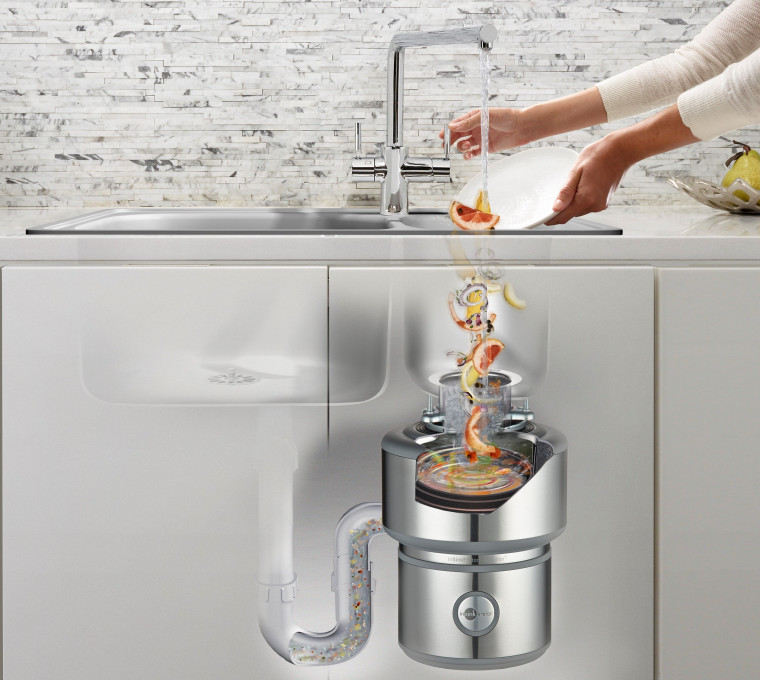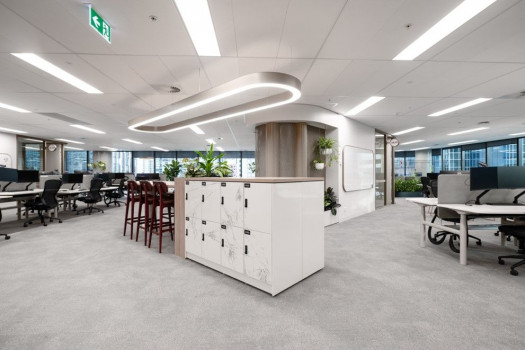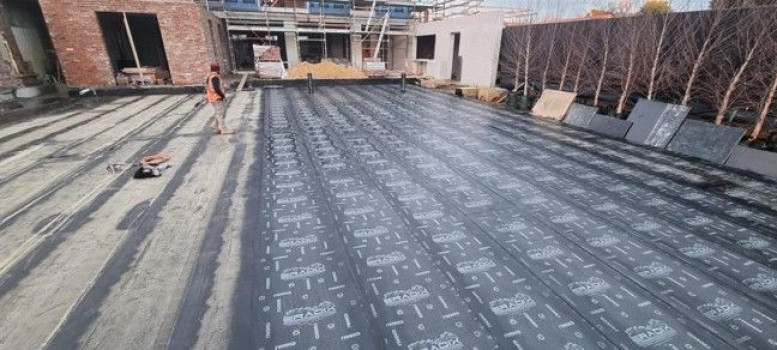Archify Live: Food Waste Disposers by InSinkErator




These are our monthly webinars that we hold to keep you up to date with the latest in industry insights from our product suppliers. Our presenter today is Krystle from InSinkErator. She's going to be taking you through our session on food waste disposers. Welcome Krystle
_Page_01.jpg) Krystle: Good afternoon, everyone and thank you so much for joining us. Today I'm going to present to you how food waste disposals are helping to combat Australia's food waste problem.
Krystle: Good afternoon, everyone and thank you so much for joining us. Today I'm going to present to you how food waste disposals are helping to combat Australia's food waste problem.
_Page_02.jpg)
First of all, I'd like to start by giving you a little bit of history on InSinkErator.
InSinkErator is a business unit of Emerson and is today the world's largest manufacturer of food waste disposers, producing over 7 million units per year for distribution worldwide. The first food waste disposal was invented 94 years ago in 1927, by John W. Hanes and I must say it did look quite different from the modern units we have today. All InSinkErator food waste disposers are made at our Wisconsin factory in the USA.
_Page_03.jpg)
Food waste is a huge problem in Australia.
Around a third of household bins is food waste and one in five shopping bags end up in the bin, costing most families anywhere upwards of $2,200 every year. Most of this waste ends up in landfill. When the waste decomposes in landfill, it produces methane gas, which is 21 times more toxic than carbon dioxide.
Food waste contributes to other environmental problems as well. The additional energy required to transport waste to landfill is getting more and more expensive as landfills move further away from urban centers.
If food waste could be represented as its own country, it would be the third largest emitter of greenhouse gases.
Since food waste is 75% to 90% water, it is a significant contributor to landfill leachate. Leachate is the toxic liquids leeches from landfill as trash decomposes, and there's a significant cost to capturing and treating it before it reaches and pollutes water sources.
_Page_04.jpg)
So how can we safely divert food waste from landfill, and help Australia with its huge problem of food waste, all while being environmentally friendly and giving a little something back?
I have a short video I would like to play for you that explains how InSinkErator food waste disposers help with this process.
So, to summarize on a few points from the video, food waste disposals help divert food waste from landfills, helping to reduce greenhouse gas emissions.
Food waste is sent through our sewer to a wastewater treatment plant. Capable wastewater treatment plants can recycle the food waste into renewable energy, which can be fed back into the grid and can also post this food waste into bio solids for land regeneration.
Now, there are plenty of myths regarding our InSinkErator food waste disposers, so allow me to bust a number of them for you.
_Page_05.jpg)
Number one, gone are the days where you think a tractor has started up in your kitchen. Our Evolution Series features advanced sound technology and they are now extremely quiet.
Number two, believe it or not, people still believe that the third from food waste disposers go straight to harming the dolphins.
As you have seen in the previous slide, that is far from the truth. The food waste is transported to a treatment plant where it is treated safely and protects the environment.
Number three, those scary blades you see in the fictional horror movies. Well, I can assure you blades and InSinkErator food waste disposers are just that: fictional. We actually have lugs that hammer against a stationary grind ring in order to dispose of the food waste.
Myth number four, they are expensive to run. InSinkErator food waste disposals are not expensive to run, they cost less than $3.50 to run an electricity per year.
Myth five: lots of water consumption, I again can assure you this is not the case. A food waste disposer uses the equivalent of one flush per day, which is less than 1% of the total household water usage.
And lastly, maintenance. They are easy to use, are free flowing through your existing plumbing system and do not require emptying or maintenance.
_Page_06.jpg)
Now, this moves us into what kinds of food matter an Evolution InSinkErator food waste disposal can actually grind. As expected, it can grind all of your soft foods like breads and pastas, fruits and vegetables, coffee grinds and tea bags. It can also grind some harder foods like meats including fish, chicken, whole prawns, even prawn shells. Also small bones like chicken bones, fish bones and small top bones are no match for the Evolution.
_Page_07.jpg)
But what makes this all possible?
Over the past 94 years the InSinkErator food waste disposers have continually been improved with new innovations in leading technology, which leads us to the outstanding Evolution Series that is available today.
There is not a blade inside, small lugs sit on a spinning plate that act like a hammer effect breaking down the food to half the size of a grain of rice, which is then passed through the existing plumbing to the wastewater treatment plant.
All of our disposers come with a Duradrive high performing motor which results in no loss of torque and offers consistent power to dispose and grind food scraps faster and more consistently.
Twist on twist off mounts makes installation faster and simple. The average install time is 60 to 90 minutes based on the standard plumbing setups.
With three layers of internal insulation a sink, which creates a water seal to reduce noise and an anti-vibration mount, it is our quietest unit ever.
When it comes to power, we have it by way of a built in automated power boost feature, which has since been grinding more challenging food matters such as bones and larger, harder to grind food matter.
_Page_08.jpg)
Now I'd like to take a moment to talk over the challenges that I'm sure we all face at some stage when it comes to waste of large scale multi-level residential developments, and how simple it could be with the inclusion of an InSinkErator food waste disposer.
Food waste is a big inconvenience and it can create big expenses. The most common way we come across for disposing of food waste without the use of a food waste disposer is either through the use of rubbish chutes or the resident to place it in an outside bin.
Food waste moving through rubbish chutes means far more frequent cleaning of chutes, not to mention the amount of space needed for large bin collection areas. Also, decomposing food waste creates more problems including vermin, mice, flies and maggots just to name a few.
It is also an important inclusion from the resident’s perspective, as food waste is removed within seconds at the point of preparation by using a food waste disposer, which means the hassle of taking rubbish to the outside bins is removed and the inconvenience of storing food scraps within small kitchen areas is avoided. It is far more hygienic as food waste is not sitting in a cupboard.
Lastly, it is far better for the environment. Let's think about how much food waste you yourself would create on any given day. Multiply that by the amount of people within your household and a food waste disposal can very quickly become one of the most used appliances within the kitchen.
_Page_09.jpg)
We conducted a case study in the US which was done over three years, five cities and 434 households. 80% of participants said they would recommend a disposer to family and friends. The study also uncovered some interesting points.
There was a 30% reduction in household waste when food waste disposals were used. It would save as much greenhouse gas as admitted by 2,200 cars. Fifty loaded jumbo jets weigh as much as the food waste that could be diverted annually if all the homes in just one of the cities had disposers. The outcome of the study showed disposers counteract growing food waste problems, while offering savings and environmental benefits.
_Page_10.jpg)
The next two slides show some examples of projects that have InSinkErator products included and I will touch on a few.
The first is the Maroochydore Sun Central master plan. Food waste disposers were mandated across the entire master plan. Commercial and residential food waste disposers will be installed for food waste management.
_Page_11.jpg)
1 Sydney Harbour has Evolution 100s included in this project. It forms part of a system used in a modular, decentralized, automated waste management unit that use maggots to consume food waste at the location the waste is produced, converting it into sustainable protein and fertilizer, which helps with carbon offsets.
1 Barangaroo, The Crown Towers: Evolution 100s were also installed throughout this project.
So we've now come to the conclusion of the presentation. I do sincerely hope that today's session has been really educational and beneficial for you.
Q&A
Q: How do we know if the water treatment station is capable of recycling that (food that has gone through InkSinkErator mentioned in slide 3)? And if not what happens to the waste?
A: Different councils have different capabilities. There is a register that shows which councils are able to convert that into renewable energy which have capable A.Ds.
Q: What happens if it's not done?
A: They do actually still capture that methane gas and it is basically burnt off so that it doesn't leave into the atmosphere as methane gas.
Q: Do all waste management treatment plants for greater Melbourne accommodate InSinkErator waste?
A: They will accommodate it. Because it goes out of your normal plumbing, it goes out with your normal waste water. It just flows through to the treatment plan.
I think if we're talking from a component of transferring that into renewable energy, not all will. But as I said, there is a register that you can look at for that.
Q: How does the waste created by InSinkErator reach the waste pond, and the processing facility?
A: It depends on exactly what plant it has. But at the waste treatment systems they treat it like any other waste, just like your toilet waste. There is a rather large system which it goes through, which is quite lengthy.
I do know that the Sunshine Coast City Council actually have a beautiful video that runs through how that works. It's quite in depth. It runs through a number of processes, which probably I wouldn't be able to do justice in explaining. But you can definitely if you're interested in that the Sunshine Coast City Council, they have a video on that. You can watch the video here.
Q: What is the cost for an InSinkErator for residential?
A: It really depends on what residential model you're looking at purchasing, but it can start anywhere from $300 up to $1,500, so it really does just depend on the requirement. For our Evolution Series you're looking at around the $1500 mark.
That’s dependent on project as well, that price is at a recommended retail level. Obviously, at a project level, there's commercial pricing.
Q: Where can I purchase your product?
A: Any commercial reseller if you're looking at one for yourself. Any retailers, electrical goods, retailers, or plumbing retailers will also sell them. From a commercial perspective, any commercial resellers within the plumbing or electrical industry.
Q: Is there information available on your website?
A: Most of the information is available on our website, we are looking at updating our website, but pretty much most of the information you can find on the website.
And if there's something that's not on there, please feel free to shoot me an email and I will absolutely find that information for you - [email protected]
Q: Can it be used for gray water into the garden?
A: It really depends on your system. What I would advise is for you to go back and talk to your manufacturer of that specific system. I do know that some do allow it and some don't allow it. So it really depends on your manufacturer.
If you have any more questions, please direct them to Krystle, she’s more than happy to help out with anything you might need - [email protected]. You can also visit their profile on Archify to see all of their products as well as their website.




 Indonesia
Indonesia
 New Zealand
New Zealand
 Philippines
Philippines
 Hongkong
Hongkong
 Singapore
Singapore
 Malaysia
Malaysia







